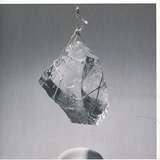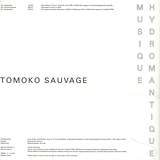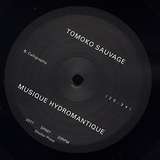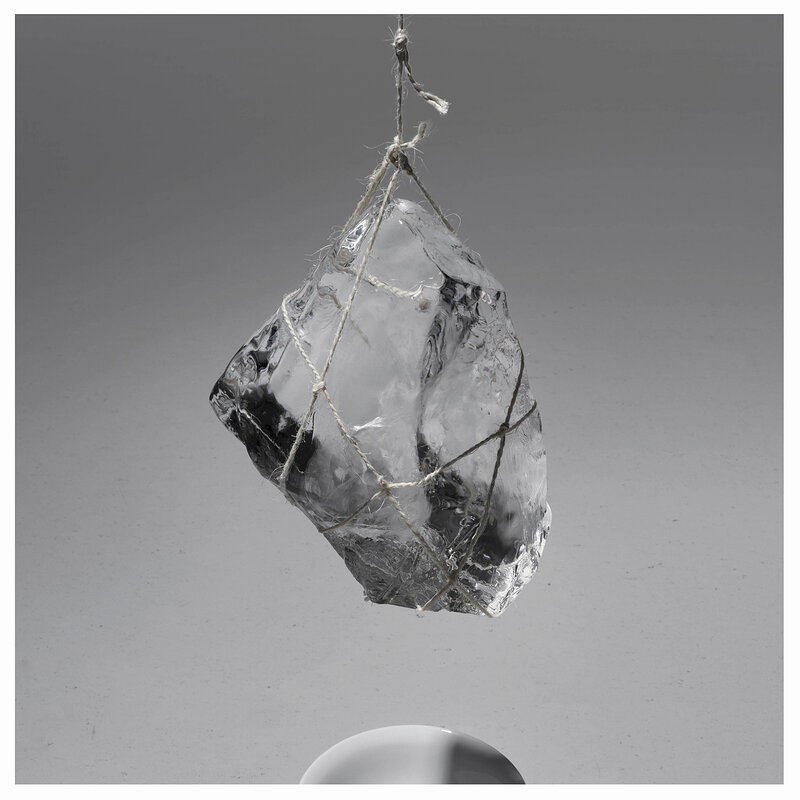Tomoko Sauvage: Musique Hydromantique
‘archiving many years of performance-based practice on the waterbowls - the natural synthesizer of her invention’ - Highly Recommended!
‘Musique Hydromantique is the second solo album by Tomoko Sauvage, archiving many years of performance-based practice on the waterbowls - the natural synthesizer of her invention, composed with porcelain bowls filled with water and amplified via hydrophones (underwater microphones).
For more than ten years, Sauvage has been investigating the sound and visual properties of water in different states, as well as those of ceramics, combined with electronics. Water drops, waves and bubbles are some of the elements she has been playing with to generate the fluid timbre. Since around 2010, hydrophonic feedback has been an obsession for the musician - an acoustic phenomenon that requires fine tuning depending on the amount of water, a subtle volume control and interaction with the acoustic space.
Calligraphy was recorded in a genuine echo chamber, with about 10 second reverbs, situated in a former textile factory. Like an endless exercise to draw perfect curves and forms floating in the air, the subaquatic feedback frequencies are pitch-bended with the mass of water sculpted by a hand changing its quantity. Fortune Biscuit is about the singing bubbles emitted from the pieces of ‘biscuit’ (porous terra-cotta). Depending on the texture of the surface, each biscuit makes different sound : insect and animal voices in a forest, motors, crying babies changing pitches and rhythms while absorbing the water... Clepsydra (meaning water clock) features Sauvage’s classical technique, a random percussion with dripping water. She tunes the waterbowls by adding and removing water, making flowing glissando, to find the balance point in ever-changing tonalities.
Just as the flow of water is subject to a number of variables such as temperature and pressure, water clocks mark a time that is shifting and relative. However, slowness dominates throughout the album as a result of favoring the full resonance of the instrument, leading to a path to experiencing timelessness.
All the tracks are live-recorded without electronic effects or editing. They were recorded during the night or very early in the morning and the whole album is to be listened to during that period of a day.’
Tomoko Sauvage: Musique Hydromantique
‘archiving many years of performance-based practice on the waterbowls - the natural synthesizer of her invention’ - Highly Recommended!
| Clepsydra | 10:49 | AIFF € 1.75MP3 € 1.25 |
| Fortune Biscuit | 8:37 | AIFF € 1.75MP3 € 1.25 |
| Calligraphy | 20:34 | AIFF € 2.50MP3 € 1.75 |
‘Musique Hydromantique is the second solo album by Tomoko Sauvage, archiving many years of performance-based practice on the waterbowls - the natural synthesizer of her invention, composed with porcelain bowls filled with water and amplified via hydrophones (underwater microphones).
For more than ten years, Sauvage has been investigating the sound and visual properties of water in different states, as well as those of ceramics, combined with electronics. Water drops, waves and bubbles are some of the elements she has been playing with to generate the fluid timbre. Since around 2010, hydrophonic feedback has been an obsession for the musician - an acoustic phenomenon that requires fine tuning depending on the amount of water, a subtle volume control and interaction with the acoustic space.
Calligraphy was recorded in a genuine echo chamber, with about 10 second reverbs, situated in a former textile factory. Like an endless exercise to draw perfect curves and forms floating in the air, the subaquatic feedback frequencies are pitch-bended with the mass of water sculpted by a hand changing its quantity. Fortune Biscuit is about the singing bubbles emitted from the pieces of ‘biscuit’ (porous terra-cotta). Depending on the texture of the surface, each biscuit makes different sound : insect and animal voices in a forest, motors, crying babies changing pitches and rhythms while absorbing the water... Clepsydra (meaning water clock) features Sauvage’s classical technique, a random percussion with dripping water. She tunes the waterbowls by adding and removing water, making flowing glissando, to find the balance point in ever-changing tonalities.
Just as the flow of water is subject to a number of variables such as temperature and pressure, water clocks mark a time that is shifting and relative. However, slowness dominates throughout the album as a result of favoring the full resonance of the instrument, leading to a path to experiencing timelessness.
All the tracks are live-recorded without electronic effects or editing. They were recorded during the night or very early in the morning and the whole album is to be listened to during that period of a day.’




